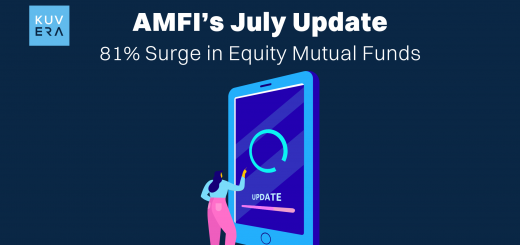A mutual fund investment may be made using a system called a systematic investment plan (SIP). A predetermined sum is withdrawn from the investor’s bank account regularly and invested in the mutual fund of their choosing through SIP.
With SIPs, new investors in Indian mutual funds may commit to making regular investments over time. Additionally, SIP investment has introduced the notion of investing with a specific financial goal and gradually increasing the amount invested. While SIPs offer a new way to invest in mutual funds, they aren’t the end of the road.
Similarly, many of us need to know mutual fund investment strategies before understanding mutual funds. SIPs have helped investors better understand how investments function and how they may use them as an investment vehicle.
What is a SIP Investment?
SIP is a systematic investment plan, a method for making modest, regular investments in a mutual fund plan. SIP is a method in which a certain amount of money is automatically deducted from an investor’s bank account and deposited in a mutual fund of their choice regularly.
The first stage in the SIP journey is to choose a mutual fund program. A predefined amount will be deposited in the fund plan every month. This fee entitles the investor to a certain amount of fund units.
Investing in SIP over time allows you to invest at market highs and lows. It is not necessary to monitor the market for the same. As a result, SIP reduces stock market volatility.
Furthermore, after establishing the regular payment limit, frequency, and length, one may provide independent bank instructions for direct transfers from their bank account into the mutual fund scheme.
Why should you invest through a SIP?
If you’re searching for the finest approach to start investing, a mutual fund systematic investment plan (SIP) is one of the most incredible options. Here are some reasons why you should invest in SIP:
- Most mutual fund programs employ SIPs to enable you to start investing with as little as Rs. 500 each month. This investment quantity is far smaller than the most popular choices, such as Fixed deposit and ETFs. This guarantees that most individuals who have just recently begun working may invest to achieve their long-term objectives.
- There is no need to deposit the SIP investment monthly for a certain period. If you do not have enough money to invest, you may have to skip a few months or possibly discontinue the SIP entirely.
- Most new investors struggle to keep their money invested for an extended length of time. SIPs provide discipline to your investing plan by definition. You choose an amount that will be automatically invested in your chosen plan, eliminating the need for monthly payments.
- It is hard to regularly and precisely time the markets. SIPs, on the other hand, are not subject to market timing. You invest a certain amount regularly, regardless of market circumstances. When the market is down, you get more fund units; when the market is up, you receive fewer fund units.
- A Mutual Fund’s performance can be summed up by its Net Asset Value (NAV). The NAV of a mutual fund is simply the market value of the securities it holds. Mutual funds invest the money collected from investors in securities markets. In addition to the market value of securities changing every day, the NAV of a scheme also varies from day to day. On any given date, the NAV per unit is determined by the market value of securities of a scheme divided by the total number of units.
- Following on from the previous point, SIPs aid in lowering the average cost of purchasing mutual fund units. The fund’s net asset value (NAV) reduces when the market falls and increases when the market rises. As a result, when you invest a set amount via SIP, the average cost of acquiring units is lower over time than when you make a lump sum investment while markets are high.
How to Invest in SIP?
To begin a SIP online, one must first go to the official website of the fund house, where they will choose the mutual fund plan and then the SIP option that is tailored to their specific requirements.
All these steps may be completed in a matter of minutes without requiring any papers and with no difficulty when using Kuvera.
Step 1: Download the Kuvera app or visit our website and sign up.
Step 2: Complete your KYC with PAN, Aadhaar, and In-person verification through video. It is mandatory to complete KYC compliance under the Prevention of Money Laundering Act, 2002 and Rules framed there under, read with the SEBI Master Circular on Anti Money Laundering (AML) Standards/ Combating the Financing of Terrorism (CFT) /Obligations of Securities Market Intermediaries.
Step 3: Select the ‘Invest’ option from “ Home”
Step 4: Select ‘Mutual Funds’, and see the categories listed, or check All Mutual Funds
Step 5: You will be directed to a list of all mutual funds available in Kuvera. By clicking on every mutual fund scheme, you can check its risk profile, net asset value, and past performance. In this section, we have included the performances of its counterparts to help you compare. To be sure, check the exit load and lock-in periods of the mutual fund. This will help you decide if you are ready for a commitment of the mentioned years.
Step 6: Select the MF scheme you want to invest in, and tap on SIP investment. Enter the amount on the next screen and tap on “Buy now”, or “Add to cart”.
Step 7: Under the payment option, you will find, ‘Mandate’. You can select that.
Evolving with SIP Investments
Using the SIP method of investing, the money is invested at regular intervals in specified equity or debt mutual fund plan. All that is required is the selection of a plan, the setting of a regular investment amount, the date for monthly withdrawals, and the investment duration. Once set up, the fund business deducts your monthly contribution from your bank account and invests it in the scheme.
Without question, SIPs are a proven and accurate method of investing. It is a versatile and beneficial investment choice. However, to attract more investors to mutual fund schemes and provide new ideas, fund houses have added numerous more elements to the vanilla SIP option throughout the years to complement the regular form of investment and aid in the quicker accumulation of wealth.
Smart SIP is a factor-based investing technique that calculates the SIP contribution amount by analysing valuation indicators such as the price-to-earnings (P/E) ratio. The regular investment amount is altered based on market circumstances under this option.
When market valuations are high, for example, one might purchase fewer units of equity mutual funds, temporarily park the money in another investment channel, or refrain from investing altogether. When the market’s value falls, more mutual fund units are purchased. It is similar to a Flexi SIP in that the amount invested is determined by how the market moves and whether or not it is invested in shares.
What are the other benefits of SIPs?
- The impact of compounding, often known as the “compounding effect,” refers to the process through which returns on investment continue to increase over time. Although it may seem straightforward at first glance, the long-term impact of this choice is significant. Investing in systematic investment plans (SIPs) enables the investor to take advantage of the power of compounding since the returns on the investment are reinvested. As a direct result, continuing to invest through a SIP is necessary to reap the most rewards. It is also beneficial to start investing at a young age so that one may enjoy these benefits over a more extended period.
- The initial financial commitment is insignificant: You may begin investing in mutual funds via a systematic investment plan (SIP) with as little as Rs. 500 or Rs. 1000 per month. This allows for a low entry point into the market. Utilising step-up or top-up SIPs is one method that may be used to increase this amount progressively. You can achieve your goals more timely manner by using the top-up SIP, which enables you to increase the amount of contributions you make gradually.
- When the net asset value (NAV) is low, a greater number of units are purchased; on the other hand, when the NAV of the fund is high, a smaller number of units are acquired. It calculates an average cost for the fund for the course of the program’s duration. Investing in the stock market no longer requires you to time the market.
- Because the investor’s bank account is debited regularly to make the payments, systematic investment plans (SIPs) are an easy and straightforward investment method. Investors who do not have the time to do regular market research and invest sensibly need to choose a reliable fund and set up a SIP to manage the monthly payments. This is necessary for investors who want to maximise their investment returns.
How much money do I need to start an SIP?
Compounding enables you to double your returns over time. It is simply a return on your mutual fund returns in stocks. Assume you invest Rs 100 in an equity fund with a ten percent yearly return. Your equities fund profit is effectively reinvested in the mutual fund, and your total corpus is Rs 110. The equities fund’s returns are now based on Rs 110 rather than Rs 100.
By investing in mutual funds via SIPs, you may benefit from the power of compounding. To get the advantages of compounding, start your SIP as soon as possible and make a long-term commitment to your investment. You may invest as low as Rs 500 every SIP payment in equity funds. It enables you to begin investing for your financial goals without waiting until you have a considerable sum of money. However, investing a bigger sum through SIP may assist if you want to attain your long-term financial goals faster.
Can I customise my SIP?
Depending on the demands of the consumers, different fund organisations provide various SIP possibilities. The most prevalent kinds, however, are:
- Flexible SIP: Flexible SIP, also known as Flexi SIP, enables you to change the amount of money you invest depending on your financial situation or market circumstances. When a person is in financial difficulty, they may choose to lower their SIP amount; similarly, when they have additional money available, such as bonuses, they may decide to raise their SIP amount. They may also opt to do so for a limited time. In the event of market circumstances, however, a predetermined formula enables the investor to invest more when the market is dropping and less when the demand is rising.
- Top-up SIP: An investor may raise monthly payments at predetermined periods with a top-up SIP. Assume an investor chooses a mutual fund plan with Rs. 5,000 monthly SIP and instructs the fund providers to boost the SIP by Rs. 1,000 every six months. As a result, the SIP will be enhanced to Rs. 6,000 after six months of monthly instalments of Rs. 5000. Similarly, the SIP amount would be raised to Rs. 7,000 beginning in the 13th month of the year. This strategy is particularly suitable for salaried staff who anticipate frequent increases.
- Perpetual SIP: Because it is related to the investment period, this kind of SIP needs extra prudence. Each investor must enter the start and end dates when initiating a SIP. Many investors, however, just enter the start date and not the end date. In such circumstances, the SIP plans become permanent, with the SIP being in effect until 2099. Investors must submit a written request to their fund companies to terminate their SIP. As a result, if an investor intends to begin investing in a SIP for a certain amount of time, they must also specify the end date.
- Trigger SIP: This SIP is designed for seasoned investors. Trigger SIP permits money to be withdrawn from a bank account only when particular trigger conditions are met, for as on certain days, when the Nifty or Sensex reaches certain levels, or when the fund’s NAV falls below a specific value set by the investor. Experienced investors can employ these triggers successfully because of their abilities and past experiences.
The Dropout Mistake
You must be worried about recent market volatility if you hold mutual funds. Every time the markets collapse, small investors face a problem. Unfortunately, they often make incorrect decisions. Some investors stop participating in equity funds via systematic investment plans (SIPs), while others sell their shares to avoid further losses.
Investors should not terminate their SIPs because of a market slump. It enables them to add more troops after a fall. If they invest long-term, the stock market will suffer many ups and downs, and they might see negative returns at times. Long-term stock market returns are correlated with nominal GDP growth rates. Consequently, even if their SIPs are providing negative returns, investors should continue to participate in them.
One year is not enough to assess a mutual fund and the gains it has given in a SIP, and it is insufficient to make an investment choice in stocks. However, if the plan underperforms its benchmark over three years, you should reconsider and move to a better-performing program. Alternatively, if the scheme’s objective or administration has changed, you should speak with an advisor or another expert before making a decision.
FAQs
-
Is a systematic investment plan safe?
Investing in mutual funds via a systematic investment plan is a safe bet. It enables more regular program payments while avoiding a single lump-sum cost, which may result in higher payouts owing to fund overvaluation depending on market circumstances.
-
How to open a systematic investment plan account?
To begin a SIP, establish a clear goal, complete the KYC procedure, choose a mutual fund scheme that matches their objectives, and select the best SIP choice.
-
Do I need a Demat account to start SIP?
Although SEBI requires a Demat account to invest in the stock market, a Demat account is not necessary to set up a SIP in mutual funds.
Interested in how we think about the markets?
Read more: Zen And The Art Of Investing
Check out all our “Investor Education Originals” videos on Youtube and get smart about investing.
Start investing through a platform that brings goal planning and investing to your fingertips. Visit Kuvera.in to discover Direct Plans and Fixed Deposits and start investing today.
#MutualFundSahiHai #KuveraSabs











